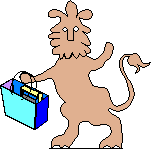
Rare Book School
Preliminary Reading
List
15th-Century Books in Print and Manuscript
Paul Needham and William Noel
INCUNABLES
The reading list is in two parts: first, some publications by PN that attempt to sketch out a few methodologies and their historical backgrounds; second, a diverse group of earlier studies, in English, that are of unusual quality. The course will get off to a faster start if you are able to read one or more of the following. If anyone is happy reading in German, please email PN, who will send another short list of some classics of German bibliographical investigation (no one in the history of RBS has ever responded to this offer!). Please try to read, and perhaps bring with you, in photocopy, at least I.1, I.4, and II.1.
I.
1. PN, "ISTC as a tool for analytical bibliography," in Lotte Hellinga & John Goldfinch, eds., Bibliography and the Study of 15th-Century Civilization (London, 1987): 39-54.
2. PN, The Printer & The Pardoner: An Unrecorded Indulgence Printed by William Caxton for the Hospital of St. Mary Rounceval, Charing Cross. (Washington DC: Library of Congress, 1986): re bibliographical evidence from binding waste. On the same topic: "Fragments in Books: Dutch Prototypography in the Van Ess Collection," in Milton McC. Gatch, ed., 'so precious a foundation': The Library of Leander van Ess (New York, 1996: exhibition catalogue of Union Theological Seminary & The Grolier Club): 85-110.
3. PN, "Concepts of Paper Study," in: Puzzles in Paper: Concepts in Historical Watermarks, ed. Daniel W. Mosser, Michael Saffle & Ernest W. Sullivan II (Oak Knoll Press & The British Library, 2000), 1-36. Best to read after Stevenson, infra (II.4). If you want to dig deeper, see also "Res papirea: Sizes and Formats of the Late Medieval Book," in [Peter Rück, ed.], Rationalisierung der Buchherstellung im Mittelalter und in der frühen Neuzeit (Marburg an der Lahn, 1994): 123-145 (this books seems to be almost unfindable in the U.S., unfortunately); and "Aldus Manutius's Paper Stocks: The Evidence of two Uncut Books," Princeton University Library Chronicle 55 no. 2 (Winter 1994): 287-307.
4. PN, "Counting Incunables: The IISTC CD-ROM," [Review Essay] in Huntington Library Quarterly 61 nos. 3 & 4 (2000), 456-529. Includes a survey history of incunable cataloguing.
II.
1. Henry Bradshaw, "The Printer of the Historia S. Albani," (Memorandum No. 1, Cambridge, 1868); reprinted in his Collected Papers (Cambridge, 1889): 149-63. Perhaps the first true "classic" of analytical bibliography. It will repay careful reading, for Bradshaw sometimes seems deceptively simple. I wrote on Bradshaw: The Bradshaw Method: Henry Bradshaw's Contribution to Bibliography. The Seventh Hanes Lecture. Chapel Hill, N. Car., 1988.
2. E. Ph. Goldschmidt, Gothic & Renaissance Bookbindings, 2 vols. (London, 1928; reprinted Amsterdam, 1967). Read the introduction for an orientation on questions of 15th and 16th century bookbinding history. Everything written by G. D. Hobson and A. R. A. Hobson on bookbindings is good; and likewise by Howard M. Nixon and Mirjam Foot.
3. Neil R. Ker, Pastedowns in Oxford Bindings (Oxford, 1954: Oxford Bibliographical Society, Publications, New Series, V). Read the Introduction. Anything Ker wrote on any topic is worth reading. See, inter alia, the selection of articles in his Books, Collectors & Libraries (Hambledon Press, [1985]), e.g. pp 321-26, "The Chaining ... of Manuscripts Belonging to the Old University Library"; and/or "The Library of John Jewel," Bodleian Library Record IX no. 5 (1977): 256-65.
4. Allan H. Stevenson, " Watermarks are Twins," Studies in Bibliography, IV (1951-52): 57-91. (Full text available online.) A classic work to the same degree as Bradshaw's, above; his examples are centered on 17th century paper, but his method applies to European papermaking from the 14th through 18th centuries. Do not forget Stevenson's The Problem of the Missale Speciale (London: Bibliographical Society, 1967), which is both pathbreaking and beautifully written. I wrote on Stevenson: " Allan H. Stevenson and the Bibliographical Uses of Paper," Studies in Bibliography 47, 1994: 23-64.
MANUSCRIPTS
S. Hindman and J.D. Farquhar, Pen to Press: Illustrated Manuscripts and Printed Books in the First Century of Printing (University of Maryland, 1977).
J. Vezin, "La realisation materielle des manuscrits latins pendant la haut Moyen Age," Codicologica, 2 (1978): 15-51.
C. De Hamel, Scribes and Illuminators (Toronto, 1992).